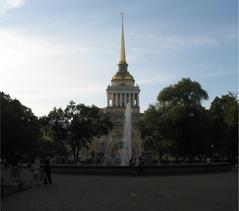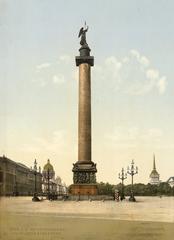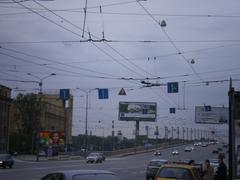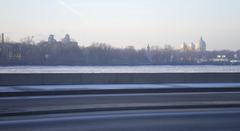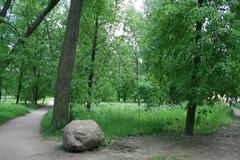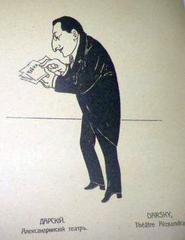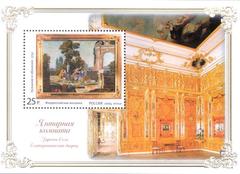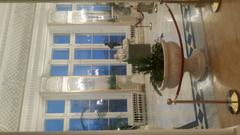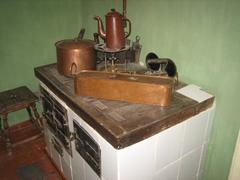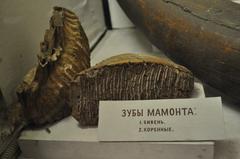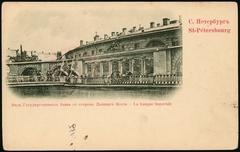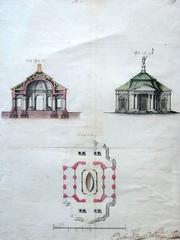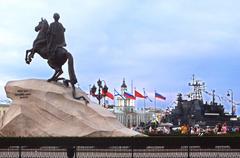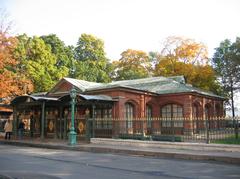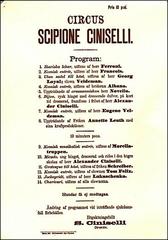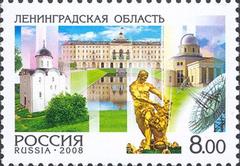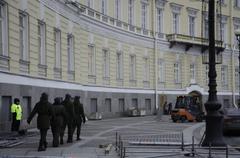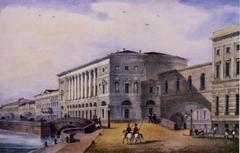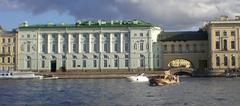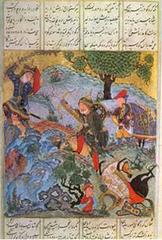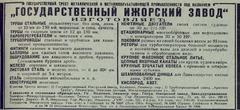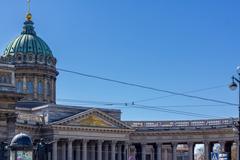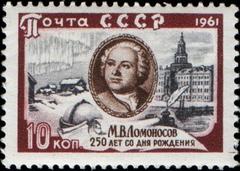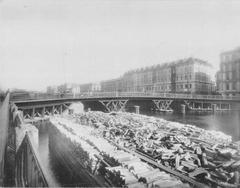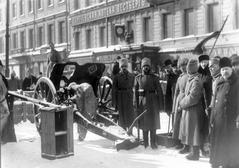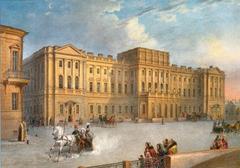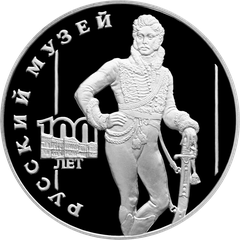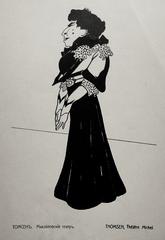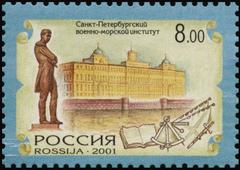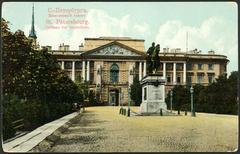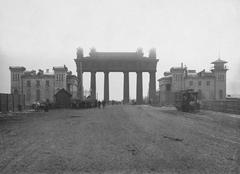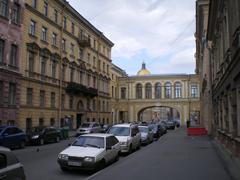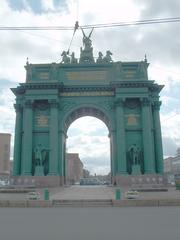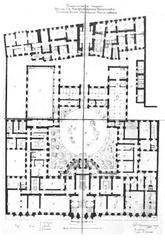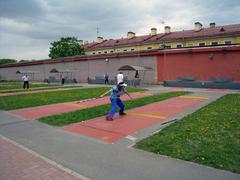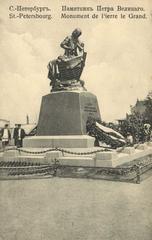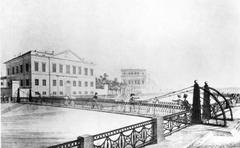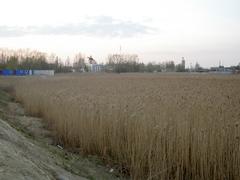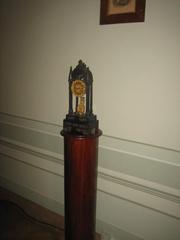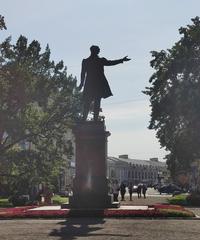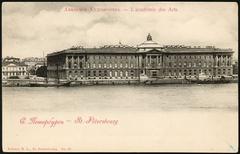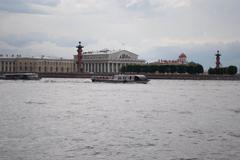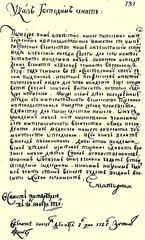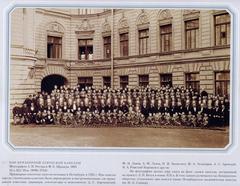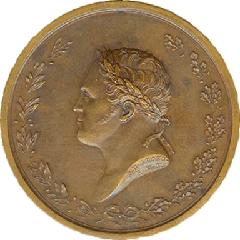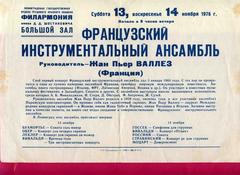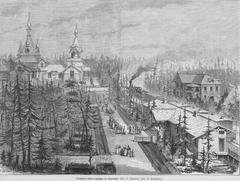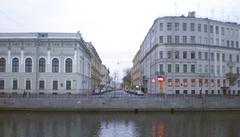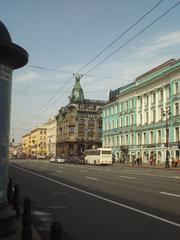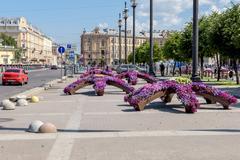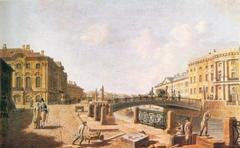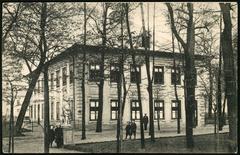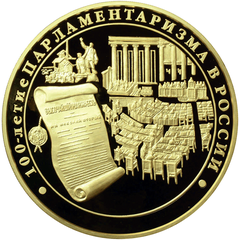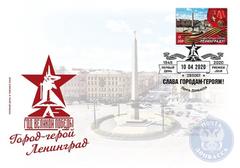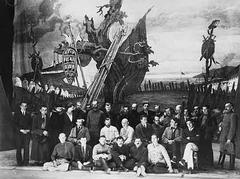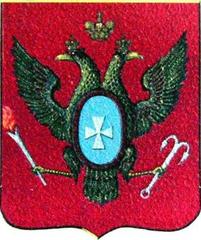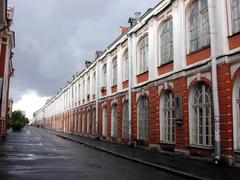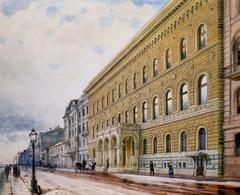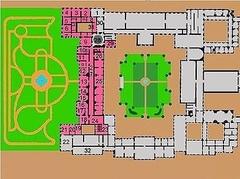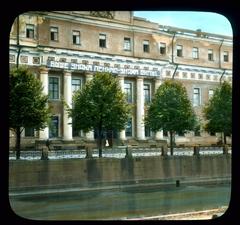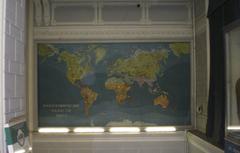Russian Museum of Ethnography Visiting Hours, Tickets, and Saint Petersburg Historical Sites Guide
Date: 14/06/2025
Introduction
The Russian Museum of Ethnography in Saint Petersburg is a leading institution dedicated to preserving and presenting the diverse cultural heritage of Russia and its neighboring regions. Established in the early 20th century, the museum invites visitors to explore the traditions, lifestyles, and artistic achievements of over 150 ethnic groups across Eurasia. Through its extensive collections—numbering more than half a million artifacts—the museum offers a unique window into the multifaceted history of the Russian Empire and the former Soviet Union.
Housed in a neoclassical masterpiece by Vasily Svinyin, completed in the early 20th century, the museum is not only a repository of cultural treasures but also an architectural landmark in the city’s Arts Square. Modern exhibitions blend traditional displays with interactive multimedia, workshops, and guided tours in multiple languages. Conveniently located near major attractions such as the Russian Museum and the Summer Garden, the museum provides amenities like an onsite shop, accessible facilities, and online ticketing for a seamless experience. For further details, visit the Russian Museum of Ethnography official website or consult Life Globe’s visitor resource.
Table of Contents
- Introduction
- Historical Background
- Architectural Significance
- Notable Collections & Exhibition Highlights
- Visitor Information
- Travel Tips and Nearby Attractions
- Special Events and Photographic Opportunities
- Digital Resources and Virtual Tours
- Frequently Asked Questions (FAQ)
- Conclusion and Recommendations
- References
Historical Background
Foundation and Early Development
The museum was founded in 1902 as a branch of the Russian Museum of Emperor Alexander III, with its first collections inspired by the 1896 All-Russian Ethnographic Exhibition in Moscow. Architect Vasily Svinyin designed the dedicated building, completed in 1913; however, public opening was delayed until 1923 due to World War I and political upheavals (Russian Museum of Ethnography Official Site).
Soviet Expansion and Modernization
During the Soviet era, the museum’s collections expanded rapidly, incorporating artifacts from across Siberia, Central Asia, and the Caucasus. Despite ideological restrictions, it preserved invaluable cultural heritage, growing to over 500,000 items. Post-1991, the museum underwent significant modernization, introducing interactive and multimedia exhibits, and embracing an inclusive approach to ethnographic research (Saint Petersburg Encyclopedia).
Architectural Significance
The building itself exemplifies early 20th-century Russian neoclassicism. The striking Marble Hall, adorned with pink Karelian marble, is a highlight for visitors. Recent renovations have improved artifact preservation, accessibility, and visitor comfort (Saint Petersburg Encyclopedia).
Notable Collections & Exhibition Highlights
The museum’s 24 exhibition halls are arranged both geographically and thematically. Highlights include:
- Traditional Costumes and Textiles: Over 30,000 costumes and textile items, including rare embroidery and ceremonial garments.
- Religious and Ritual Artifacts: Items from Orthodox Christianity, Islam, Buddhism, Judaism, and indigenous shamanic traditions.
- Immersive Reconstructions: Life-sized dioramas, such as a Central Asian yurt and Arctic indigenous dwellings, illustrate daily life and rituals.
- Jewish Heritage Collection: Documents and artifacts exploring the history and culture of Jews in Russia.
- Expedition Artifacts: Objects collected by famed Russian explorers.
The museum’s immersive displays, often presented without glass barriers, allow visitors to closely engage with the artifacts.
Visitor Information
Location and Accessibility
- Address: 4 Inzhenernaya Street, Saint Petersburg, 191186 (life-globe.com)
- Transport: Near Nevsky Prospekt, Gostiny Dvor, and Admiralteiskaya metro stations; walking distance to major city attractions.
- Parking: Limited in the city center; public transport recommended.
Accessibility for Guests with Disabilities
The museum offers ramps, elevators, and accessible restrooms. Staff can provide assistance—contact the museum in advance for specific needs.
Visiting Hours
- Open Tuesday through Sunday, typically from 10:30 AM to 6:00 PM.
- Closed Mondays and major public holidays.
- Confirm current hours on the official website.
Tickets and Admission
- General admission: 300–400 RUB for adults.
- Discounts for students, seniors, and children.
- Special exhibitions may have separate pricing.
- Purchase tickets onsite or online via the museum’s ticketing page.
Guided Tours and Special Events
- Guided tours available in Russian and English (and other languages by request).
- Thematic tours cover topics such as folk costumes, indigenous rituals, and regional cultures.
- Educational workshops, family programs, and cultural festivals are held regularly (life-globe.com).
- Check the events calendar for upcoming activities.
Facilities
- Staffed cloakroom for coats and bags.
- Clean, accessible restrooms on each floor.
- Museum shop with books, souvenirs, and replicas.
- Non-flash photography permitted in most areas.
Travel Tips and Nearby Attractions
- Plan Ahead: The museum is extensive—prioritize departments or join a guided tour for a focused experience.
- Time: Allow at least 2–3 hours for a thorough visit.
- Combine Visits: The Russian Museum, Mikhailovsky Palace, Summer Garden, and the Hermitage Museum are all within walking distance.
- Nearby Dining & Accommodation: Numerous cafes and hotels are located within the city center (life-globe.com).
- Language Support: Some exhibits are in English; audio guides and tours in multiple languages can be arranged.
Special Events and Photographic Opportunities
- Events: Lectures, performances, and hands-on workshops celebrate Russia’s ethnic diversity.
- Photo Spots: The Marble Hall and immersive dioramas offer excellent photo opportunities (non-flash photography allowed).
- Share Your Visit: The museum encourages sharing experiences on social media.
Digital Resources and Virtual Tours
- Virtual Tours: Explore select exhibitions online through the museum’s virtual platform.
- Online Catalog: Access digital collections and educational materials.
- Mobile App: Download the Audiala app for audio guides and interactive maps.
Frequently Asked Questions (FAQ)
Q: What are the museum’s opening hours?
A: Tuesday to Sunday, typically 10:30 AM to 6:00 PM; closed Mondays.
Q: How much are tickets?
A: General admission is 300–400 RUB; discounts available for eligible groups.
Q: Is the museum accessible for visitors with disabilities?
A: Yes, with ramps, elevators, and accessible restrooms.
Q: Are guided tours available in English?
A: Yes, tours in Russian and English are offered; check availability in advance.
Q: Can I buy tickets online?
A: Yes, through the official website.
Q: Is photography allowed?
A: Non-flash photography is permitted in most areas.
Q: What other attractions are nearby?
A: The Russian Museum, Mikhailovsky Theatre, Summer Garden, and Hermitage Museum are close by.
Q: Are there special events or workshops?
A: Yes, check the events calendar for details.
Conclusion and Recommendations
The Russian Museum of Ethnography is a cultural gem offering a compelling journey through the diverse peoples and traditions of Russia and Eurasia. Its extensive collections, immersive exhibits, and educational programs make it a must-visit destination for anyone exploring Saint Petersburg’s historical sites.
To make the most of your visit:
- Check current hours and events on the official website.
- Purchase tickets in advance to avoid queues.
- Download the Audiala app for guided tours and interactive features.
- Plan extra time to explore nearby landmarks and enjoy the full cultural experience.
Begin your exploration today, and immerse yourself in the extraordinary heritage preserved within this remarkable institution!
